《Markov Learning Models For Multiperson Interactions》
| 作者 | 编者 |
|---|---|
| 出版 | Stanford University Press |
| 参考页数 | 296 |
| 出版时间 | 1960(求助前请核对) 目录预览 |
| ISBN号 | 无 — 求助条款 |
| PDF编号 | 812506438(仅供预览,未存储实际文件) |
| 求助格式 | 扫描PDF(若分多册发行,每次仅能受理1册) |

CHAPTER 1.THE THEORY1
1.1.Introduction1
1.2.Stimulus-Sampling-Theory of Learning5
1.3.Simple Example:Markov Model for Noncontingent Case10
1.4.Markov Model for Zero-Sum,Two-Person Games23
1.5.Alternative Linear Model31
1.6.Comparisons with Game Theory33
1.7.Hypothesis Models37
1.8.Survey of Recent Literature42
1.9.Summary46
CHAPTER 2.METHODS OF ANALYSIS47
2.1.Introduction47
2.2.Maximum-Likelihood Estimates48
2.3.Pseudomaximum-Likelihood Estimates51
2.4.Some Statistical Tests for Markov Chains56
2.5.Estimation of Transition Numbers in Multi-Element Models60
2.6.Generalized Conditioning Model71
2.7.Summary77
CHAPTER 3.SOME ZERO-SUM,TWO-PERSON SITUATIONS78
3.1.Introduction78
3.2.Experimental Method81
3.3.Mean Learning Curves and Asymptotic Results83
3.4.Tests for Markov Properties87
3.5.Estimate of θ and Predicted Asymptotic Variance88
3.6.Game-Theory Comparisons90
3.7.Multi-Element Models95
3.8.Generalized Conditioning Model104
3.9.Summary108
CHAPTER 4.SOME NON-ZERO-SUM,TWO-PERSON SITUATIONS109
4.1.Introduction109
4.2.Model110
4.3.Experimental Method113
4.4.Mean Learning Curves and Asymptotic Results114
4.5.Estimates of θA and θB117
4.6.Tests for Markov Properties119
4.7.Game-Theory Comparisons120
4.8.Generalized Conditioning Model123
4.9.Summary127
CHAPTER 5.A SYMMETRIC NON-ZERO-SUM SITUATION128
5.1.Theoretical Description128
5.2.Experimental Method129
5.3.Mean Learning Curves130
5.4.Maximum-Likelihood Estimate of θ and Related Predictions131
5.5.Tests for Markov Properties132
5.6.Game-Theory Comparisons132
5.7.Generalized Conditioning Model133
5.8.Summary135
CHAPTER 6.COMMUNICATION AND DISCRIMINATION IN TWO-PERSON SITUATIONS136
6.1.Introduction136
6.2.Model140
6.3.Experimental Method143
6.4.Mean Learning Curves and Asymptotic Results145
6.5.Estimate of θ and Predicted Asymptotic Transitions148
6.6.Game-Theory Comparisons150
6.7.Summary152
CHAPTER 7.ANOTHER COMMUNICATION STUDY153
7.1.Introduction153
7.2.Model154
7.3.Experimental Method157
7.4.Mean Learning Curves and Asymptotic Results159
7.5.Asymptotic Transition Data162
7.6.Summary165
CHAPTER 8.A THREE-PERSON,SIMPLE MAJORITY SITUATION166
8.1.General Description of the Situation166
8.2.Model167
8.3.Experimental Method172
8.4.Mean Learning Curves and Asymptotic Results172
8.5.Estimates of θ in Terms of ?(Oi)175
8.6.Tests for Markov Properties176
8.7.Maximum-Likelihood Estimate of θ and Predicted Transition Probabilities176
8.8.Game-Theory Comparisons178
8.9.Summary180
CHAPTER 9.DISPLAY OF PAYOFF MATRIX181
9.1.Theoretical Description181
9.2.Experimental Method182
9.3.Tests for Differences Among Experimental Conditions185
9.4.Mean Learning Curves and Asymptotic Results186
9.5.Game-Theory Comparisons189
9.6.Tests for Markov Properties190
9.7.Generalized Conditioning Model190
9.8.Summary193
CHAPTER 10.MONETARY PAYOFFS AND NONCONTINGENT REINFORCEMENT SCHEDULES194
10.1.Introduction194
10.2.Experimental Method196
10.3.Mean Learning Curves and Asymptotic Results197
10.4.Tests for Markov Properties199
10.5.Generalized Conditioning Model200
10.6.Application of the Multi-Element Model205
10.7.Application of the Linear Model217
10.8.Application of a Hypothesis Model222
10.9.A Memory Model227
10.10.Summary230
CHAPTER 11.UTILITY FUNCTIONS232
11.1.Introduction232
11.2.Model234
11.3.Experimental Method237
11.4.Mean Learning Curves and Transition Data239
11.5.Maximum-Likelihood Estimates of the Conditioning Parameters and Predicted Asymptotes240
11.6.An Alternative Interpretation of Conditioning241
11.7.Utility Functions;Luce's Multiplication Rule243
11.8.A Third Interpretation of Conditioning246
11.9.An Observing-Response Model of Choice Behavior247
11.10.Brief Account of a Second Experiment252
11.11.Summary254
CHAPTER 12.EXTENSIONS AND CONCLUSIONS256
12.1.Introduction256
12.2.Social Conformity256
12.3.Economic Oligopoly265
12.4.Continuous Games271
12.5.Conclusions278
BIBLIOGRAPHY285
AUTHOR INDEX291
SUBJECT INDEX293
1960《Markov Learning Models For Multiperson Interactions》由于是年代较久的资料都绝版了,几乎不可能购买到实物。如果大家为了学习确实需要,可向博主求助其电子版PDF文件(由 1960 Stanford University Press 出版的版本) 。对合法合规的求助,我会当即受理并将下载地址发送给你。
高度相关资料
-

- Markov chain models--rarity and exponentiality
- 1979 SpringerVerlag
-

- MODELS FOR CLEAR WRITING
- 1984 PRNTICE HALL INC
-

- MODELS FOR CLEAR WRITING
- 1984 PRNTICE HALL INC
-
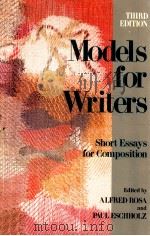
- MODELS FOR WRITERS SHORT ESSAYS FOR COMPOSITION
- 1989 ST.MARTIN'S PRESS
-
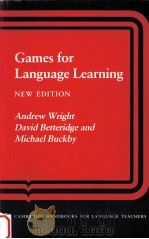
- Games for Language Learning
- 1984 Cambridge University Press
-
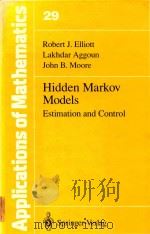
- Hidden Markov Models: Estimation and Control
- 1995 Springer New York
-

- Markov models and optimization
- 1993 Chapman & Hall
-
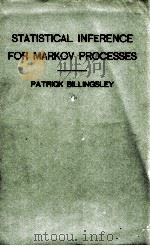
- STATISTICAL INFERENCE FOR MARKOV PROCESSES
- 1961 THE UNIVERSITY OF CHICAGO PRESS
-
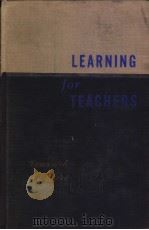
- LEARNING FOR TEACHERS
- 1962 THE MACMILLAN COMPANY
提示:百度云已更名为百度网盘(百度盘),天翼云盘、微盘下载地址……暂未提供。➥ PDF文字可复制化或转WORD





